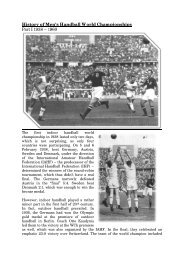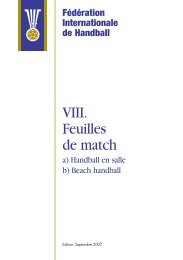Beach handball - IHF
Beach handball - IHF
Beach handball - IHF
Create successful ePaper yourself
Turn your PDF publications into a flip-book with our unique Google optimized e-Paper software.
13.5 If there is a free-throw decision against the team that is in possession of the ball<br />
when the referee whistles, then the player who has the ball at that moment must<br />
immediately drop it or put it down at the spot where he is (16:2d).<br />
Free-Throw Execution<br />
13.6 When a free throw is taken, the players of the attacking team are not allowed to<br />
position themselves closer than 1 meter from goal-area line of the opponents before<br />
the free-throw has been taken (15:1)<br />
13.7 When the free-throw is being taken, the opponents must remain at a distance of at<br />
least 1 meter from the thrower.<br />
13:8 The free-throw is normally taken without any whistle signal from the referee (see,<br />
however 15:3b) and, in principle, from the place where the infraction occurred. The<br />
following are exceptions to this principle:<br />
In the situations described under 13:4 a-b, the free-throw is taken, after whistle<br />
signal, in principle from the place where the ball was at the time of the interruption.<br />
In case of 13:4c, the free-throw is taken, also after whistle signal, in principle from<br />
the place below where the ball touched the fixture.<br />
If a referee or technical delegate (from <strong>IHF</strong> or a continental/national federation)<br />
interrupts the game because of an infringement on the part of a player or team<br />
official of the defending team, and this results in a verbal caution or a personal<br />
punishment, then the free-throw should be taken from the place where the ball was<br />
when the game was interrupted, if this is a more favorable location than the position<br />
where the infringement took place.<br />
The same exception as in the previous paragraph applies if a timekeeper interrupts<br />
the game because of a faulty substitution, or illegal entry under rules 4:3, 4:4, 4:6,<br />
4:13, 4:14.<br />
As indicated in rule 7:10, free-throws called because of passive play shall be taken<br />
from the place where the ball was when the game was interrupted.<br />
Notwithstanding the basic principles and procedures stated in the preceding<br />
paragraphs, a free-throw can never be taken inside the throwing team’s own goal<br />
area. In any situation where the location indicated is inside the goal area,<br />
the location for the execution must be moved to the nearest spot immediately<br />
outside the goal area.<br />
If the correct position of the free-throw is nearer than one meter from the defending<br />
team goal area line, then the execution must take place at least one meter away<br />
from the goal area line.<br />
13.9 Once a player from the team that received the free-throw is in the correct position for<br />
taking the throw, with the ball in hand, he must not put it down on the floor and pick<br />
it up again, or bounce it and catch it again (13:1a).<br />
27


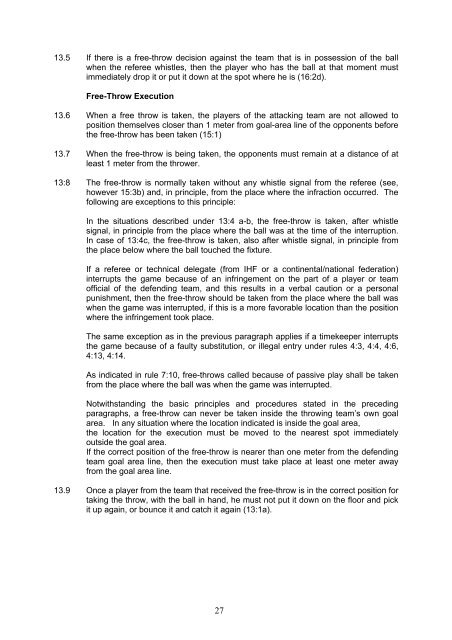

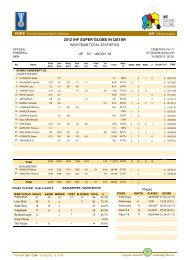

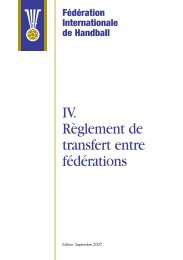
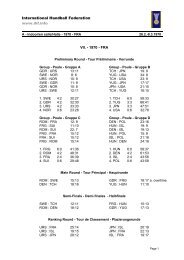
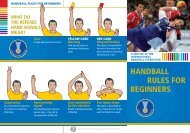
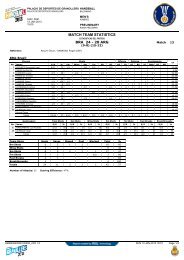

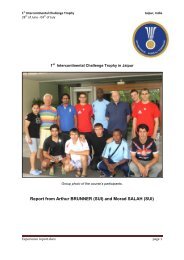
![[IHF- Referee list 2012/2013]](https://img.yumpu.com/18217761/1/184x260/ihf-referee-list-2012-2013.jpg?quality=85)
